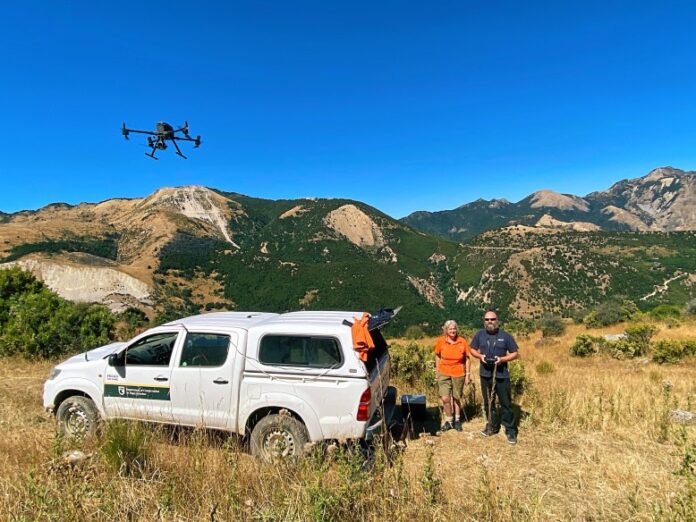Source: Department of Conservation
By Ingrid Grunner, Ranger – Biodiversity Monitoring
Funding in Budget 2018 has opened a new frontier of drone technology for use in threatened plant conservation.
: Simon Litchwark
“Zoom in!” – “Zoom in harder!” – “Yes! There! It is one! We’ve got one!” Jan is glued to the screen. And she is ecstatic. She has just found the proverbial needle in the haystack – a tiny little plant, no larger than a 10-cent piece, growing high up on a large, vertical cliff.
Jan Clayton-Greene from DOC’s Renwick team is in the field with Colin Aitchison and Vinnie Hart from Garden City Helicopters. They are using a drone to search for the Chalk Range cress (Pachycladon fasciarium), a little plant endemic to the Chalk Range in South Marlborough, and considered to be on the brink of extinction. Only 26 are known to exist. The team’s mission is to find more.
The Renwick team have tried surveys on foot, but large areas of the cress’ habitat are too steep and dangerous to access. Drone technology is meant to fill the gap. If large numbers of the cress can be found, it might be able to come off the threatened species list.
The technology is impressive: The camera has high resolution, a strong zoom and is fully adjustable. It relays photographs and video via full high definition (FDH) live feed to a large screen mounted on the back of a truck. This allows Jan to identify plants on the go. The camera also has a laser-rangefinder to record exact plant locations, and a strobe light that makes it visible against the cliffs over long distances.
Despite all the technological wizardry, using a drone in the remote and steep terrain of the Chalk Range is challenging. Flight paths need to be carefully planned, as the drone’s battery only lasts for 45 minutes. Wind, sun and shade can all reduce the quality of the imagery so that plant identification becomes difficult. At some point, electrical interference makes the image on the large screen unusable, so Jan has to switch to a little hand-held screen.
Against all these challenges, the team successfully completed two survey trips in 20/21. Sadly, they only discovered six new plants. This means that, despite all the effort, the Chalk Range cress remains on the brink of extinction. But it also means we now know with more certainty what we are up against.
And even though we did not discover as many plants as we would have liked, we have learned a lot about the technology. This experience can now help with surveys for other threatened plants that grow in inaccessible places, giving us a tool to better understand their status and find out which ones are most in need of management.



